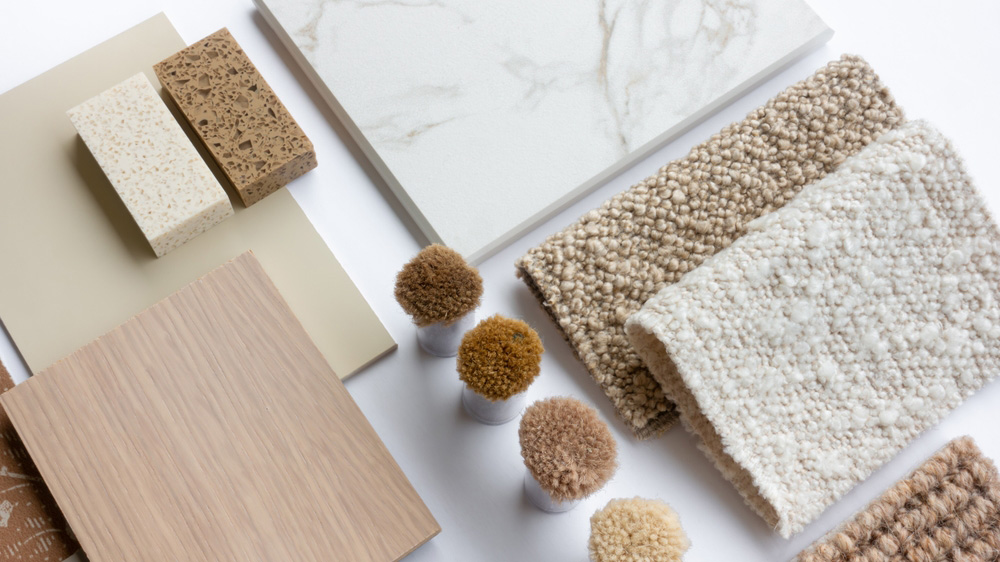Imagine an interior where every element exudes health and serenity… Just the thought makes you want to rearrange everything, doesn’t it? Choosing non-toxic materials and furniture is more than just a trend. It’s a gesture of care for your well-being and that of your loved ones. But where to begin? Follow this guide to transform your space into a healthy and welcoming sanctuary!
Why Avoid Toxic Products in Your Home?
Conventional furniture and decorative materials are often made with harmful chemicals such as VOCs (volatile organic compounds), brominated flame retardants, or phthalates. These substances can slowly release into your home’s air, causing health issues like respiratory irritations, migraines, or even endocrine disruptions. Yet, many eco-friendly and healthy alternatives are available! Let’s dive into a few non-toxic materials.
1. Solid Wood Furniture: Natural and Durable
Solid woods are excellent non-toxic materials that lead to a healthy interior. Unlike particle boards or MDF (medium-density fiberboard), it doesn’t contain formaldehyde-based glues, a highly toxic substance. Opt for:
- Local species like oak, beech, or pine to reduce carbon footprint.
- Natural finishes such as linseed oil or beeswax, that protect while allowing the wood to breathe.
Tip: Look for labels like FSC or PEFC, which ensure sustainable forest management.
2. VOC-Free Paints and Wall Coverings
Traditional paints and wallpapers can be chemical time bombs. Fortunately, other non-toxic materials can beautify your walls without polluting your air:
- Eco-friendly paints: Choose brands certified by eco-labels like the European Ecolabel or Natureplus.
- Natural fiber wallpapers: Materials like linen, jute, or bamboo add warmth and texture while being healthy.
- Be cautious with adhesives: Use water-based, solvent-free glues for safe application.
3. Untreated Natural Textiles
Curtains, rugs, cushions… Textiles play a significant role in decoration. But did you know they can be impregnated with chemicals like toxic dyes or stain treatments? Favor:
- Organic cotton: Soft, hypoallergenic, and pesticide-free.
- Linen: A breathable and naturally antibacterial material.
- Untreated wool: Ideal for rugs and throws.
Tip: Seek certifications like GOTS (Global Organic Textile Standard) or OEKO-TEX.
4. Flame Retardant-Free Mattresses and Sofas
Our upholstered furniture can be an unsuspected source of pollution. Flame retardants, often added to synthetic foam, are linked to serious health issues. Opt for:
- Natural latex mattresses: They provide excellent support and are free from toxic products.
- Sofas with natural fabrics and fillings like cotton or wool.
Tip: Ask manufacturers for assurance of flame retardant-free products.
5. Tile, Wood, or Cork Flooring
Choosing the right flooring is crucial for a healthy home. Avoid synthetic carpets, often treated with chemicals, and prefer:
- Tile: Durable and easy to maintain, perfect for humid areas.
- Solid wood parquet: With a natural finish, it’s both elegant and healthy.
- Cork: A renewable material that’s soft underfoot and an excellent insulator.
6. Air-Purifying Plants: A Useful Touch of Green
Not only do they beautify your interior, but some plants can also purify the air by absorbing toxins. Among the most effective:
- Areca palm: Ideal against xylene and toluene.
- Boston fern: Excellent for increasing humidity.
- Pothos: Easy to maintain and effective against formaldehyde.
Smart Shopping Tips
- Read labels: Look for terms like “VOC-free” or “non-toxic.”
- Trust eco-labels: FSC, GOTS, OEKO-TEX… They are your best allies for informed choices.
- Consider handmade or second-hand: Vintage furniture, free from modern treatments, can be an excellent alternative.
In Conclusion
Reimagining your interior with non-toxic materials and furniture is a choice for health and well-being without sacrificing style. By opting for sustainable and natural solutions, you’ll transform your home into a true cocoon—healthy and inviting. So, ready to refresh your interior with a touch of mindful freshness?
Sources:
- EPA – « Volatile Organic Compounds’ Impact on Indoor Air Quality » : epa.gov
- Green Building Alliance – « Healthy Materials for Sustainable Interiors » : greenbuildingalliance.org
- Environmental Working Group (EWG) – « Safe Furniture Guide » : ewg.org
- Harvard T.H. Chan School of Public Health – « The Impact of Furniture on Indoor Air Quality » : hsph.harvard.edu
- National Center for Biotechnology Information (NCBI) – « Health Effects of Flame Retardants » : ncbi.nlm.nih.gov


